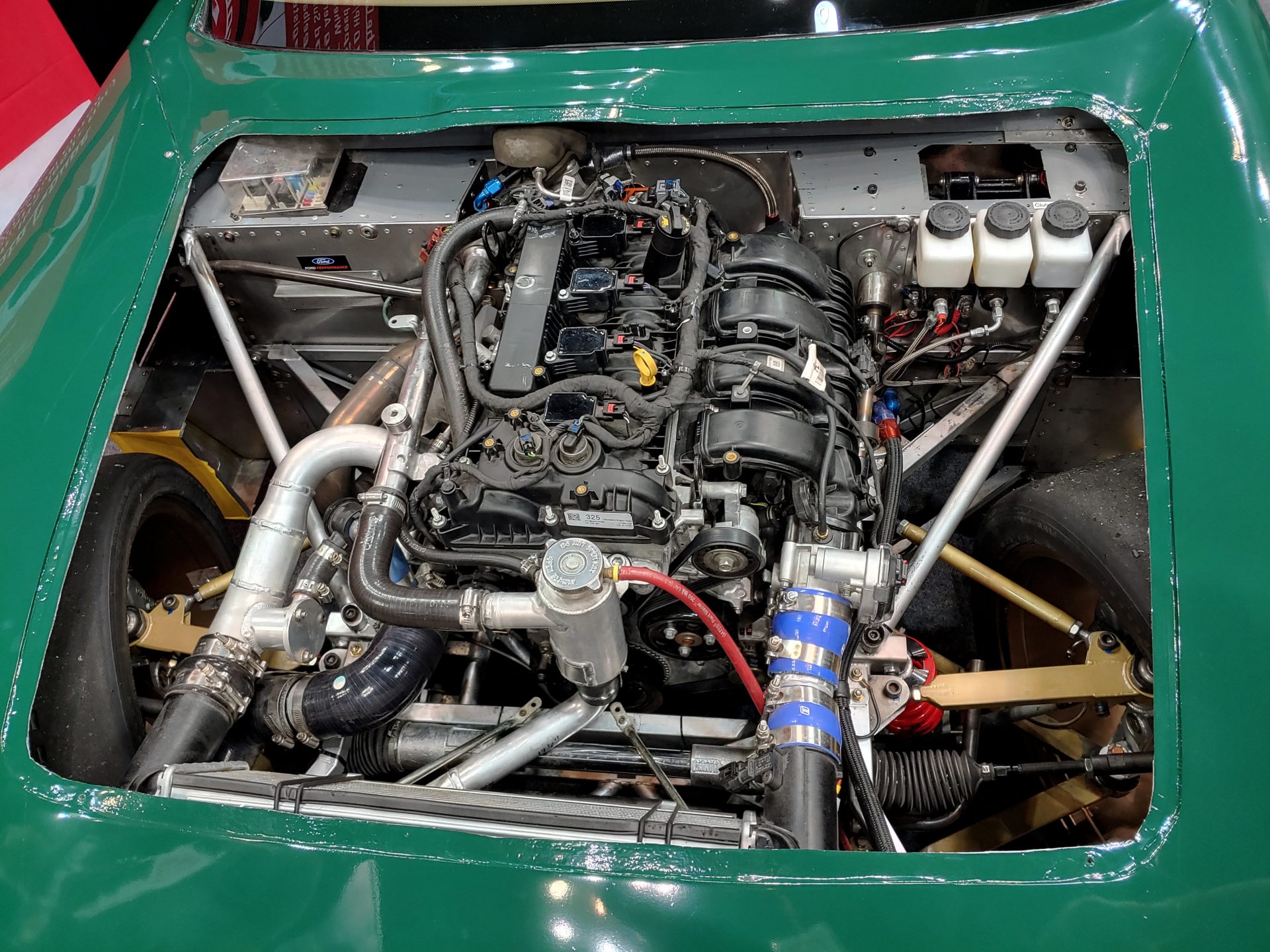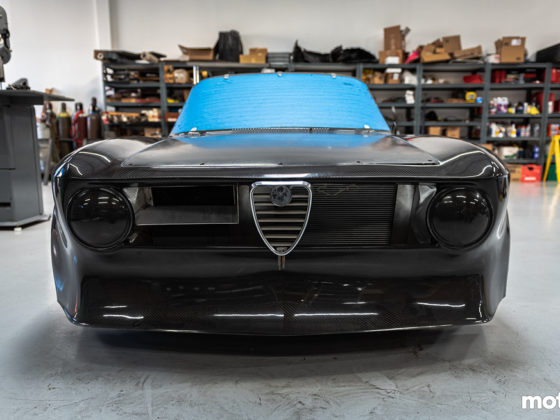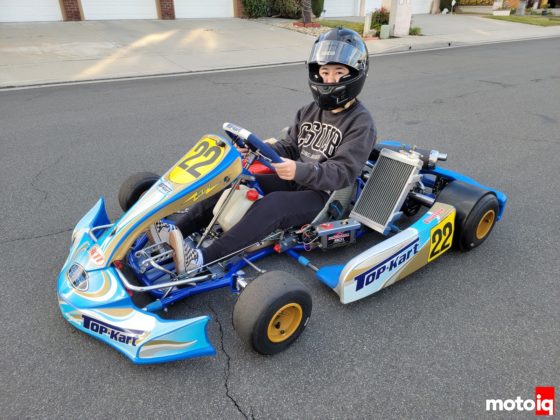
Except that it’s not a nitrous manifold, but it is a complete water-air intercooler to replace the factory one. The methanol/nitrous injection ports are just one of the many amazing bonus features you get with your purchase.
The factory B58 engine’s charge air cooler is prone to heat soak, making the factory ECM rather angry, pulling timing and reducing overall power output. The CSF upgrade helps alleviate these soak issues as well as helps to reduce overall intake air temperatures (IAT). MotoIQ has already done an in-depth feature of this manifold if you’re interested.
Additional expansions in the CSF lineup include Audi RS6/RS7, McLaren 720S/765LT, and Porsche 992 Turbo/S coolers. And don’t forget that CSF continues to partner with other manufacturers on custom branded coolers. Need something special? CSF can accommodate you.

The Cypher Micro Cooler weighs in at a paltry 5.7lbs for when you really need to shave every bit of weight that you can. In addition to being a physically smaller unit, the steel mounting plate has been replaced with a carbon fiber unit. So when you are sparing no expense in achieving lightness, the Cypher Micro is your choice. Or if you have to fit a lot of cooling into a really tiny space. And, even more awesomely, you can run it off a 24v tool battery for short periods, which is nice if your racing series involves being parked on the grid for an extended period.

This is the new Aircon Cooler, a forced-air helmet cooling system. This helmet cooler is equally remarkable, with many of the same overall design features as the Chillout Systems liquid coolers. If you’ve driven a car without any cooling whatsoever and then used a shirt cooler system, you know how much more comfortable you are. But you also notice that your head is still hot and miserable. Now you can bring the same level of core cooling to your noggin’ with this new system. And you can do it with only 10lbs of additional weight.
While it’s not that hard to add a fan to your helmet, most forced air setups are just blowing ambient temperature air around, at best, which tends to be however humid it already is. If you’ve ever been in the swampy south, blowing 90F air that’s 80% humid around in your helmet isn’t exactly much of an improvement. On the other hand, blowing 46F air that’s dry? Now that’s going to be pleasant.
The Quantum Pro Cooler has had some feature upgrades since we installed one in Project SC300, getting a little lighter and a lot more efficient. The nicest feature, though, is that the Quantum Pro includes an internal recirculator, so you no longer need to attach a cooling loop to your system to get it to cool down. Instead, simply disconnect your shirt while the system is powered on, and it will automatically detect this and begin to recirculate internally. It’s also gotten a bit more expensive, though. In total, for just under $10,000, you can get a complete driver cooling combination that adds about 20lbs of weight to your car. You’ll never need to worry about finding ice, though.

The Fluid Logic system comes in two flavors, pun intended, as you’ll see. The first, pictured here, is a magnetic dry break that incorporates a drink system into your helmet air. With options for powered drink dispensing and a blinky reminder light (“hey you idiot, you haven’t drunk anything in thirty minutes!”), this system is pretty rad.




4 comments
Thanks for the summary! I have only been to PRI once sadly, and I think that was back in 2008 when it was still in Orlando. Interesting about the Precision, the end housings look very EFR-like. Well, only so many ways to do the same feature set. I know the owner of Dyme PSI, he’s very active out here in SoCal helping with builds. The rattle snake kit would be awesome for any shop that builds cars. It takes all the guess work out, reduces wasted material, and all the stuff they send is tested for quality to ensure there are no leaks (maybe the most important part). I was wonder how the Miata Cup cars were keeping from grenading the manual transmission… I see they just replaced it completely, ha! I bet Hunter will sell a ton of those tire change machines. The EV conversions are coming… the tricky part right now for the DIY’er is the battery pack and thermal management. AEM was smart and jumped on it early, getting their ECU and BMS stuff going. Now the OEMs are doing crate motor/inverter setups. The last piece really are battery modules/packs.
Khiem, to answer your “question” on the Miata Cup car transmissions: they obviously weren’t doing anything to keep them from grenading- but they were covering them under warranty and contingency. I had a friend go through 2 transmissions- completely covered under warranty. Mazda told him they would not cover the 3d one if it blew as well.
But, isn’t that one of the best benefits of selecting the Mazda as a track toy? Things are covered under warranty just like on the street car, and for things that aren’t- you get a discount on the parts- 2yrs ago replacement crash parts for cup car owners was cost plus 10%! What other auto manufacturer is supporting their grassroots motorsport customers like that?
Part of the reason for the change from the OEM transmission to the SADEV was that the OEM trans were not holding up to the rigors of racing. However, it was usually the front-pack racers who were flat-shifting and driving the cars to 99.99% of their capabilities that were destroying the trans. I don’t think it was 100% of the cars that were grenading transmissions all the time, but rather the most abusive drivers were guaranteed to kill one.
I don’t think your casual weekend warrior or track-day enthusiast is going to kill an OEM trans.
I definitely see the value in the Dyme system for volume. For one-sy two-sy kind of hose work, though, it may not be worth the entry price.
I was definitely at a few of those Orlando-era PRI events!
I believe this is basically the same transmission in the FR-S/86/BRS and if so its is pretty fragile.